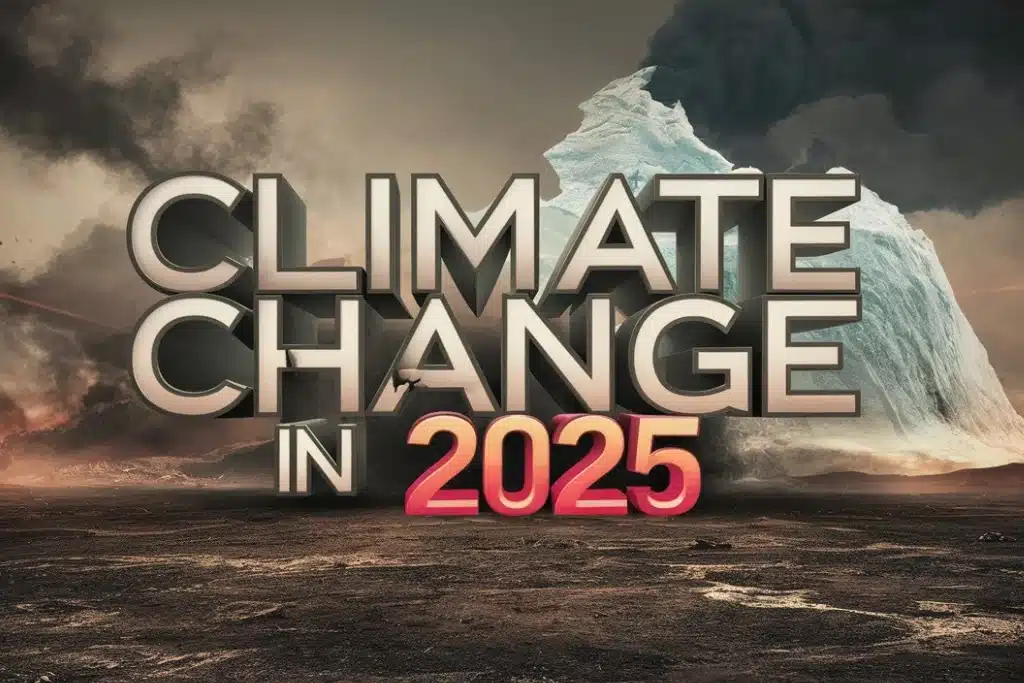Climate change has moved from being a distant concern to a pressing global crisis. As we step into 2025, its effects are more visible than ever, affecting weather patterns, food production, public health, and economic stability. Experts warn that without immediate and coordinated action, the consequences could be irreversible. In this article, we explore the latest insights from climate scientists, organizations, and global agencies, providing a clear picture of what 2025 holds for our planet.
Global Warming Projections for 2025
According to the Intergovernmental Panel on Climate Change (IPCC), global temperatures are expected to rise 1.5°C above pre-industrial levels by 2025 if current emission trends continue. While this may seem incremental, even a small increase can trigger extreme weather events and disrupt ecosystems.
NASA’s latest data confirms that the past decade has been the warmest on record, with 2024 being among the hottest years globally. The melting of polar ice caps and glaciers continues at an alarming rate, contributing to rising sea levels and the loss of natural habitats for countless species.
Expert Quote: Dr. Jennifer Francis, a climate scientist at Rutgers University, notes, “The rate of warming we’re observing now is unprecedented in human history. Even incremental increases have profound implications for both nature and society.”
How Extreme Weather Is Changing Lives
Extreme weather events are no longer sporadic; they are becoming a new normal. From heatwaves and wildfires to hurricanes and floods, these events have direct consequences on human life, infrastructure, and economies.
- Heatwaves: In 2025, countries like India, Pakistan, and Australia are expected to experience record-breaking heatwaves, increasing the risk of heat-related illnesses and mortality.
- Flooding and Hurricanes: Coastal cities face heightened flooding risks due to intensified storm surges and erratic rainfall. The UN Office for Disaster Risk Reduction (UNDRR) reports that economic losses from climate-related disasters have doubled over the past decade.
- Wildfires: The Amazon, Siberia, and California continue to face unprecedented wildfire seasons, releasing massive amounts of carbon dioxide back into the atmosphere.
Expert Insight: According to the World Meteorological Organization (WMO), “Extreme weather events are now more frequent and severe, signaling the urgent need for mitigation and adaptation strategies.”
Expert Predictions on Rising Sea Levels
Rising sea levels are one of the most alarming consequences of global warming. IPCC projections for 2025 indicate an average rise of 10–15 centimeters globally, but some low-lying areas may experience more significant increases.
- Impact on coastal cities: Cities like Miami, Jakarta, and Venice are particularly vulnerable, facing frequent flooding that threatens housing, businesses, and public infrastructure.
- Displacement of populations: Rising waters may displace millions, creating climate refugees and straining resources in neighboring regions.
- Threat to biodiversity: Mangroves, coral reefs, and coastal wetlands are at risk, threatening marine biodiversity and ecosystem services.
Expert Quote: Dr. Michael Mann, climatologist, states, “Sea level rise is slow but relentless. Even small increases compound over time, leading to irreversible changes in coastal environments.”
Impact on Agriculture, Food Supply & Health
Climate change significantly affects food security, agriculture, and public health:
- Agriculture: Changing rainfall patterns, extreme heat, and soil degradation threaten crop yields. Staple crops like wheat, maize, and rice are particularly at risk.
- Food supply: Disruptions in agriculture can trigger price spikes and shortages, disproportionately affecting vulnerable populations.
- Health: Rising temperatures contribute to heat stress, the spread of vector-borne diseases like malaria and dengue, and respiratory illnesses from pollution and wildfires.
According to the World Health Organization (WHO), “Climate change is expected to cause approximately 250,000 additional deaths per year between 2030 and 2050, largely from malnutrition, malaria, diarrhea, and heat stress.”
Renewable Energy & Technology Solutions in 2025
Transitioning to renewable energy is crucial to mitigate the worst effects of climate change. By 2025, global efforts have intensified:
- Solar and wind energy: Cost reductions and technological advancements have made these sources more accessible and efficient.
- Electric vehicles (EVs): EV adoption continues to rise, reducing dependency on fossil fuels.
- Carbon capture technology: Innovative solutions are being deployed to capture and store carbon dioxide, directly addressing emissions.
- Smart grids & sustainable infrastructure: Urban planning increasingly incorporates climate resilience, from green buildings to efficient water management.
Expert Insight: Fatih Birol, Executive Director of the International Energy Agency (IEA), emphasizes, “The clean energy transition is no longer optional—it is essential for safeguarding our climate and economy.”
What Individuals and Governments Are Doing
Climate action requires combined efforts from governments, businesses, and individuals:
- Policy initiatives: Many governments are enforcing stricter emissions standards, incentivizing renewable energy, and promoting reforestation projects.
- Corporate responsibility: Businesses are committing to carbon neutrality, sustainable sourcing, and energy efficiency.
- Individual efforts: Citizens are adopting eco-friendly lifestyles, from reducing waste to using sustainable transport and supporting green initiatives.
Notable Example: The European Union’s Green Deal aims to make Europe climate-neutral by 2050, with significant progress already visible by 2025 through renewable projects and emissions reduction policies.
FAQ About Climate Change in 2025
Q1: How fast is the global temperature rising in 2025?
A: Current estimates suggest a rise of 1.5°C above pre-industrial levels, with the potential for more extreme increases if emissions continue unchecked.
Q2: Which regions are most affected by climate change?
A: Low-lying coastal areas, tropical regions, and drought-prone countries face the highest risks from floods, storms, and extreme heat.
Q3: What can individuals do to combat climate change?
A: Reducing carbon footprints, using renewable energy, supporting sustainable products, and advocating for climate policies can make a measurable difference.
Q4: Are there technologies that can reverse climate change?
A: While no technology can reverse climate change entirely, carbon capture, renewable energy, and reforestation can significantly mitigate its impact.
Q5: How does climate change affect health?
A: It increases the prevalence of heat-related illnesses, infectious diseases, respiratory conditions, and malnutrition due to food shortages.
Conclusion: Taking Action in 2025
Climate change in 2025 is not a distant threat—it is a lived reality. From rising temperatures and extreme weather events to health crises and food insecurity, the effects are widespread. Experts agree that urgent action, both on a personal and policy level, is essential. By embracing renewable energy, sustainable practices, and global cooperation, we can mitigate the worst outcomes and create a resilient future.


